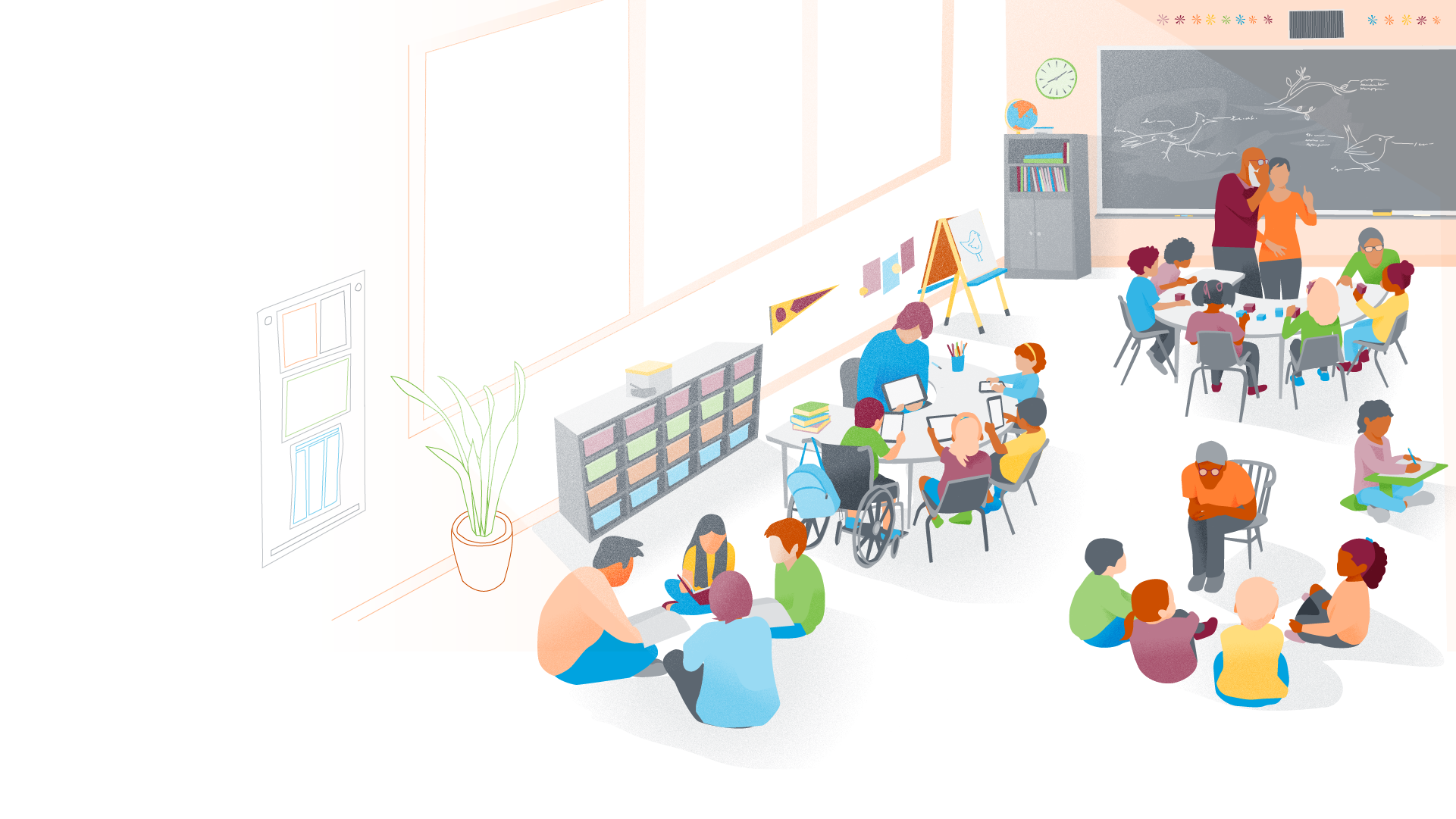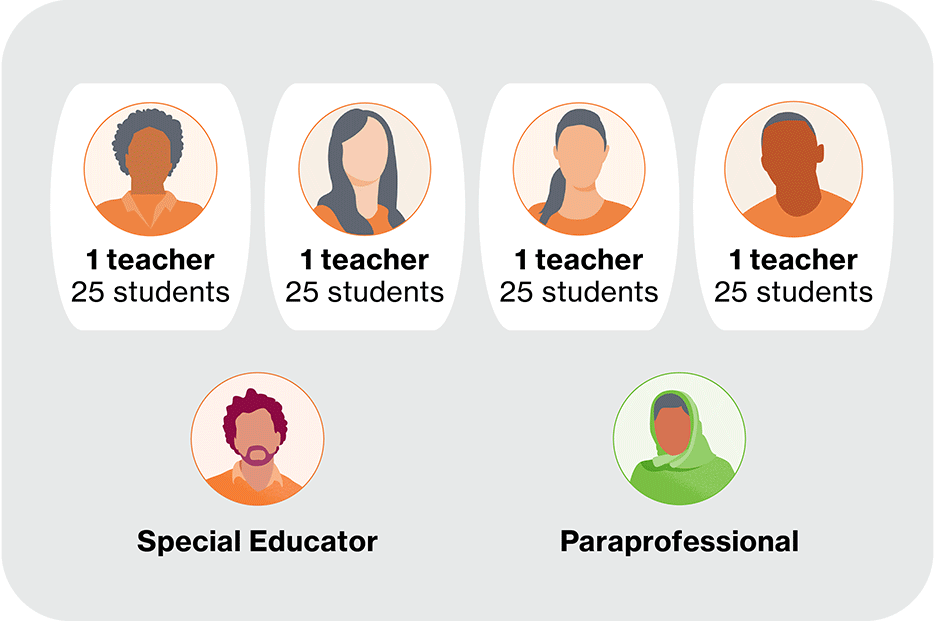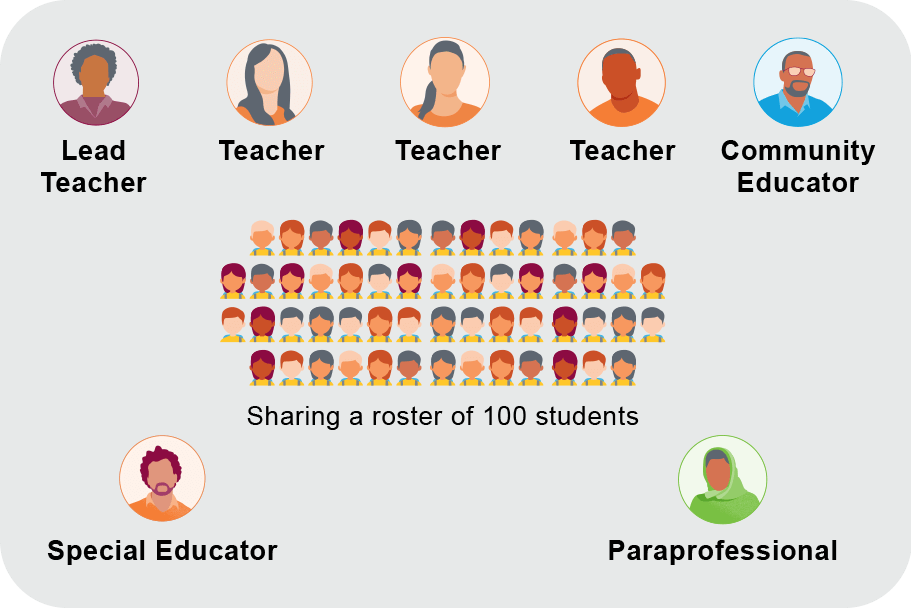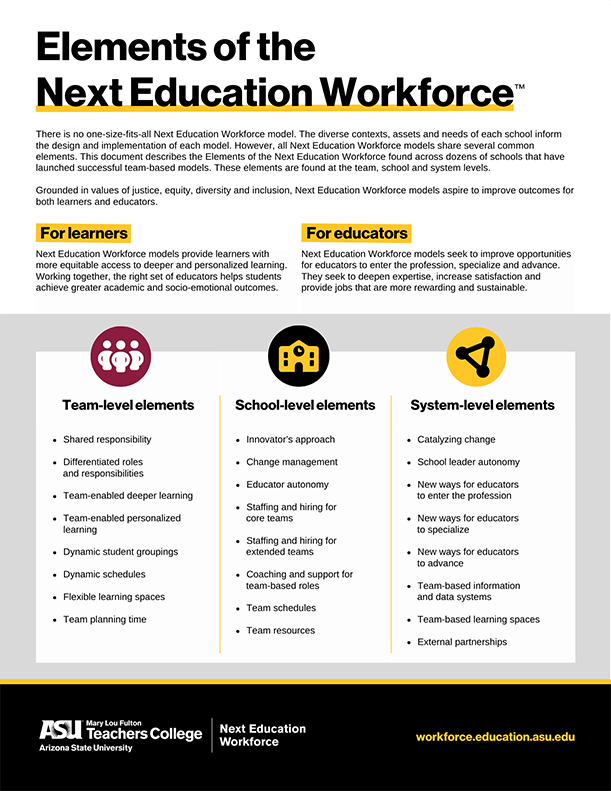
How teams work
By centering students and building teams of educators around them, teams can improve outcomes for learners and working conditions for educators.
Next Education Workforce team-based models represent a fundamental shift in how we design roles and deploy educators to meet the needs of students. When we stop placing teachers in one-teacher, one-classroom models and start building teams of educators able to leverage and develop distributed expertise, new opportunities emerge.
What changes with team-based models?
In conventional school staffing models, teachers often work in isolation with limited collaboration opportunities. Next Education Workforce models emphasize teamwork, with educators typically working in groups of 2–6. This shift creates new opportunities for educators, students, school systems and communities.
From this…

To this…

Conventional modelsOne-teacher, one-classroom |
Next Education Workforce modelsTeam-based strategic school staffing |
|
|---|---|---|
| Teacher experience |
Conventional models:Teachers work in isolation with insufficient opportunities to collaborate. |
Next Education Workforce models:Teachers work in teams of 2–6 educators with ample opportunity to collaborate. |
| Teacher expertise |
Conventional models:Teachers are expected to be equally good at everything on an ever-growing list of responsibilities. |
Next Education Workforce models:Teachers distribute expertise among the team with different educators bringing deep content knowledge, applied knowledge from another industry or a deeper understanding of project-based learning or technology integration. |
| Teacher satisfaction |
Conventional models:Few teachers are satisfied with their jobs and most leave the profession within a few years. |
Next Education Workforce models:Teachers are more satisfied with their jobs, a leading indicator for retention. |
| Early career support |
Conventional models:First-year teachers work alone in classrooms by themselves. |
Next Education Workforce models:Novice teachers are supported by a team. |
| Workforce diversity |
Conventional models:The education workforce lacks the rich diversity of the students it serves. |
Next Education Workforce models:Team-based models can move us toward a more diverse workforce, creating new pathways for all people, especially educators of color, to enter and advance through the profession. |
| Student outcomes |
Conventional models:Student outcomes are narrowly defined. |
Next Education Workforce models:Teams support the development of broader student outcomes, including academic, behavioral and social-emotional growth. |
| Student relationships |
Conventional models:Student relationships are limited. |
Next Education Workforce models:Students interact with and form connections with peers and a wider variety of adults, contributing to a greater sense of belonging. |
Elements of the Next Education Workforce
Explore key elements found across dozens of schools that have launched successful team-based models
There is no one-size-fits-all Next Education Workforce model. The diverse contexts, assets and needs of each school inform the design and implementation of each model. However, all Next Education Workforce models share several common elements. Learn more about what they have in common at the team, school and system level.
Additional resources to explore
How do Next Education Workforce models improve outcomes?
Explore ways that new and differentiated educator roles and responsibilities might influence outcomes.
What do team-based strategic school staffing models look like in action?
With this video-based Virtual Site Visit, you can observe learning spaces and hear directly from educators, team leaders, school leaders and superintendents with team-based models.
